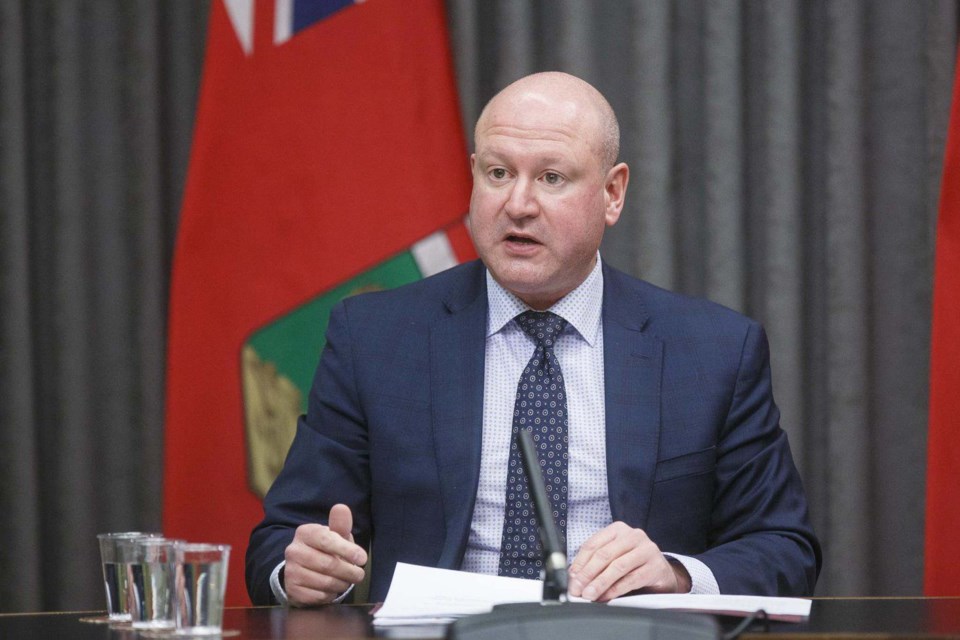Manitoba’s new COVID-19 case numbers and test positivity rate continued their downward trend June 28, and the chief provincial public health officer said if those trends hold steady, the second phase of looser restrictions could occur earlier than the beginning of August, though not before at least two weeks have passed under the current public health orders.
Sixty-one new infections were reported Monday and the positivity rate was 6.2 per cent. Twenty-seven of the new cases were in Winnipeg, 20 in the Interlake-Eastern health region, eight in the north, four in the southern health region and two in the Prairie mountain health region.
The Shamattawa/York Factory/Tataskweyak/Split Lake health district was the only one in the north reporting more than one new infection June 28, with five. That health district has 73 active cases, second most in the region behind The Pas/Opaskwyak/Kelsey, with 104. Other districts with more than 10 active cases include Island Lake with 31, Sayisi/Tadoule/Barren Lands/Brochet/Northlands/Lac Brochet with 23 and Bunibonibee/Oxford House/Manto Sipi/God’s River/God’s Lake with 12.
183 people are in Manitoba hospitals due to the virus, including 50 in intensive care. There are also 11 Manitobans in intensive care units in Ontario as a result of COVID-19 infections.
Fifteen northern residents are hospitalized as a result of the virus, eight of them in intensive care.
“Our numbers continue to trend in the right direction,” said Dr. Brent Roussin at Monday’s COVID press conference, suggesting that the next easing of public health orders could proceed early the way it did for the changes that took effect June 26, before the July 1 target date. “It’s looking like we’re going to be able to do that with step two as well.”
Roussin said no changes would likely be made until at least one incubation period, about two weeks, had passed to determine what effect looser restrictions are having on case numbers.
There were 13 cases of COVID among people linked to schools in the north in the two weeks leading up to June 22, including two from Deerwood School in Thompson, four from Frontier Collegiate Institute in Cranberry Portage and seven in total at four schools in The Pas.
There have been 751 COVID infections caused by variants of concern in the north, including 645 caused by the B.1.1.7 or United Kingdom variant, and 54 by the B.1.617.2 or Delta variant. The other 53 are uncategorized.
Roussin said Manitoba isn’t seeing widespread transmission of the Delta variant right now but warned that COVID is still circulating in the population, noting the death of a girl under 10 years old as a result of the virus was announced over the weekend.
“This is another tragedy during this pandemic,” he said.
The age of the latest Manitoban to die from the virus underlines the importance of getting vaccinated if you can, since people under 12 aren’t currently eligible for vaccination in Canada.
“When we get vaccinated, we protect those people who can’t vaccinated.”
Provincially, 72.9 per cent of Manitobans have received one dose of vaccine and 38 per cent have received two doses. In the north, 69.3 per cent of the population has been at least partially vaccinated, with 43,366 first doses and 29,884 second doses administered. This includes 27,998 first doses given to First Nations residents as well as 18,064 second doses.
All Manitobans became eligible to book second-dose appointments as of June 25, though at least 28 days must have elapsed between their first and second doses.
Despite months of requests to reduce the number of people you come in contact with, some people still aren’t getting the message. Roussin was asked about a recent positive case in the north who had 121 contacts.
“Roughly about 15 per cent of contacts will turn into a case,” said Roussin. “We can’t have that many contacts on average.”
Roussin also said there will likely be some sort of fourth wave in the province, though it is unknown what it might look like.
“I think we need to be prepared for a fourth wave,” he said, adding that seasonal flu and other respiratory viruses will probably occur in higher numbers this fall than they did last flu and cold season.




